The past year has seen many announcements and commitments by all parts of the aviation industry towards net zero. There have been at least three industry-led or sponsored roadmaps and each pointed towards a net-zero trajectory by mid-century. Every tonne of CO2 counts, so what could we begin doing tomorrow and build momentum towards delivering that ambition? The European aviation industry’s recent Destination 2050 net-zero roadmap gave some examples and one in particular, relating to route charges and flight planning, has implications that won’t be universally popular among airlines and air navigation service providers, writes Dr Jarlath Molloy. Nevertheless, industry stakeholders could, and arguably should, incentivise flying the minimum fuel route rather than the minimum cost route, to reduce aviation CO2 emissions by up to 1.5%. It is a small step towards the net zero goal, but we can’t wait for new aviation fuels and fleet to magically solve the climate emergency in 20 or 30 years’ time while other parts of our economies are prioritising their environmental performance today.
“How did you go bankrupt?… Two ways, gradually and then suddenly.” This quote is from Ernest Hemingway’s 1926 novel ‘The Sun Also Rises’ and has been misquoted probably since then. A popular adaptation substitutes ‘change’ for ‘bankruptcy’ but given the last 12 months in the aviation industry both are arguably true.
Parts of the aviation industry have seen disruptors drive innovation while other parts have struggled to be dynamic, as a result of culture and aeropolitics. The shock the industry is now experiencing was possibly accelerated by Covid-19 but change was already coming as a result of evolving external expectations of the industry and its environmental impact, as evidenced by the NATS Aviation Index 2020 survey of public attitudes to aviation. Has the industry been reluctant to see it coming?
The European aviation industry is now committed to a net-zero emissions target by 2050, even if did take over 20 years since the publication of the IPCC special report ‘Aviation and the Global Atmosphere’ to reach this point. The steps to deliver against the 2050 target are not as defined as we might hope for yet, and while we wait another 20 years for fuel and fleet changes to materially reduce the industry’s CO2 emissions in the coming decades, there is an opportunity for airlines and air navigation service providers (ANSPs) to do something relatively simple to begin to make an impact in the meantime.
Few in the aviation industry want to talk about environmental negative externalities. This refers to the environmental or social impact of an activity being fully ‘priced in’ to the economics of that activity. Regulators don’t take account of the broader environmental impact of the CO2 (and non-CO2) emissions from aviation. One manifestation of this is the unintended consequences from route charges. While airlines have a number of largely fixed costs, they can minimise ANSP route charges by flying through neighbouring airspace with lower route charge rates. This leads to flying longer routes than necessary; the overall cost to the airline is lower, even if the amount of fuel used (and CO2 emissions) is higher. The 1.5% potential saving referenced in the Destination 2050 report probably doesn’t sound that much but 3 million tonnes of CO2 emissions (based on pre-Covid traffic) is not insignificant and this is an initiative that could be deployed relatively quickly.
Each ANSP sets their route charges to cover their costs, leading to significant variation in rates across Europe. There are many drivers of these costs, but airspace complexity and staffing levels to manage that complexity are among the largest factors. If air traffic flows change then some ANSPs might find their airspace busier than normal and others might find the opposite, leading to unplanned cost challenges for the ANSPs, which has partly been seen as a result of the pandemic.
In January 2020, the way in which route charges are applied in Europe changed. Historically these costs were based on the planned distance from the aircraft flight plan, which led to unintended consequences for ANSPs, who each have a different route charge rate. Since last year, the route charge is based on the actual distance flown by each aircraft. The idea is that if airlines file flight plans more accurately, reflecting where they intend to fly, then ANSPs can better anticipate and manage traffic flows with greater certainty. The change in the route charge regulation was a good first step. With the current low traffic levels, perhaps it is time to take the next step to support the industry towards its net-zero goal?
One solution to addressing the additional CO2 emissions problem is as follows, in three linked parts:
- If the centralised route charge office presented airlines with a harmonised rate across Europe then it would incentivise filed flight plans to be based on minimum CO2 emissions rather than minimum cost. Airlines would be less likely to fly longer routes than necessary as there would be no route charge benefit for doing so.
- In the background, the route charging office would operate a revenue sharing arrangement, based on the rate the ANSPs already prepare and are regulated on, to cover each of their fixed and transition costs to adapt.
- In order to manage the changes to airspace capacity and demand, regulators would flip from measuring departure time performance to arrival time performance.
If airlines are incentivised to fly the minimum CO2 emissions route, Swiss airspace at the centre of Europe could become quite busy! Traditionally, capacity is managed using air traffic control regulations to lower the flow rate through busy sectors, leading to airborne or ground delays. Airlines and airports are measured against on-time departure, so they get the aircraft off the stands as soon as ready. Both are keen to maximise usage of those stands so they have an incentive to see the outbound aircraft move as soon as ready. Similarly, air traffic control wants the aircraft to depart in the right sequence to optimise the flow of traffic on the runway. Adopting an ‘on time arrival’ regulatory approach instead of the current ‘on time departure‘ helps mitigate the problem.
Intuitively, most of us are probably more concerned about our arrival time, rather than if our departure time adjusts by a few minutes. This flexibility could give the airspace network manager the chance to optimise the flow of traffic to minimise CO2 emissions, while potentially helping airlines minimise their fuel costs by allowing them stay at the gate (or remote stand) with engines off rather than sitting in a queue on a taxiway or, worse still, circling in a hold for 20 minutes.
The latest five-year regulatory period for European ANSPs began in January 2020 but will only last three years this time. Instead, European regulators are resetting their assumptions, traffic forecasts, economic modelling and performance targets for ANSPs. Perhaps European regulators should seize the opportunity to prompt the industry take an immediate and tangible small step towards reducing its CO2 emissions? Making the changes now would minimise the disruption and bake in best practice as traffic picks back up.
This suggestion will be unpopular among airlines, ANSPs, airports and some regulators for a number of reasons. It would upset financial assumptions, affect capacity and change the regulatory convention to focus on outcomes. Change is disruptive, but is it credible to sit around for another 20 years for fuel and fleet changes to materially reduce aviation CO2 emissions? It is not a perfect solution and there will be unintended consequences but what we have now is worse.
Top image: Map of European airspace regions, with ECAC States highlighted in pink (source: Eurocontrol)

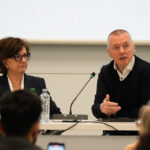
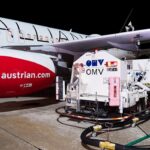

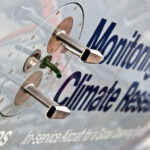

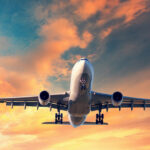

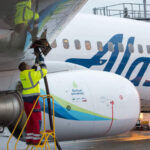
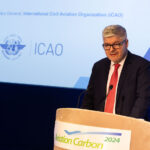






More News & Features
Commentary: China’s fair and equitable solution to civil aviation’s climate challenge
COMMENTARY: Airline industry faces carbon credit shortage in net-zero push
COMMENTARY: Capping aviation emissions – a pressing necessity with a potential solution
COMMENTARY: Tourism and aviation emissions mitigation policy – disparate and inadequate
COMMENTARY: With mounting challenges over its climate impact, is aviation’s social licence at risk?
COMMENTARY: Deconstructing the roadmaps – what to expect from aviation emissions reduction plans